What it is?
The term "soft roof" refers to several materials based on fiberglass, cellulose sheet or polyester impregnated with modified bitumen. These are PVC membranes, and other roll coatings, but first of all, it is a very popular flexible tile, which has decorative and protective stone dressing.
The photo shows a two-story brick cottage with a soft black roof, which contrasts well with white windows and facade elements
Characteristics and application features
There are four types of soft roofing:
- roll roofing;
- membrane roof;
- roll tiles;
- flexible tile.
They are listed in order of increasing cost of materials and increasing complexity of installation work, but the characteristics of each next type are improving. And it's not just about the design and the degree of reliability, but also about the possibilities of application. Roll coverings are suitable for flat or slightly sloped roofs, but for those with a steep slope or complex shape, you need to take flexible shingles.
Main application area soft roof - private low-rise construction. It is a relatively inexpensive roof covering. gazebos, garage, summer cottage or cottage, and even a not very experienced master can handle the installation on his own.
In the photo, a country house made of rounded logs, the natural color of which is beautifully set off by a light gray soft roof
Pros and cons
You need to start with the fact that bituminous shingles are both the most beautiful and the best type of soft roof in operation. Firstly, it is piece, which means that it should not have the same flexibility as roll, and therefore can be more durable. Secondly, for repair, it is easy to replace only the damaged segment, without overwriting the coating.
However, all types of soft roofing have significant advantages.
| pros | Minuses |
|---|---|
| Resistant to extreme temperatures - withstands heating up to + 120 ° C and cooling down to - 55 ° C | Flammability - this is the trouble of those types of soft roofs that do not have special additives that prevent ignition |
| Durability - service life is 10-60 years | Environmental insecurity - a conditional minus, modern samples have a composition that does not threaten human health |
| Acoustic comfort - does not create a crash during heavy rain or hail | Relative high cost - bituminous shingles have a higher price than, for example, ondulin roofing, but they look more interesting and last longer |
| Variety of designs - soft tiles have a wide range of colors and original shape of the segments | The need for complex roof preparation - for flexible shingles, a solid, even base is required, covered with a lining carpet, and this increases the cost of roofing work, and even an increase in the mass of the roofing cake |
| Convenience of transportation and installation - the materials are flexible, mobile and lightweight, which makes them easier to handle and means a minimum of waste during installation | |
| Snow avalanche protection due to the rough surface of the shingles |
What types are there?
Roll roofing - the simplest view. The prototype of all soft roofing materials can be considered the good old roofing material. It is short-lived, because it consists of cardboard impregnated with a small amount of bitumen.
Instead of cardboard, polyester or fiberglass is now used, which can absorb much more bitumen, and polyester compounds are added to the bitumen itself, which improve the characteristics of the roofing: strength, durability, plasticity, adhesion, resistance to high and low temperatures. The aesthetic qualities are improved by sprinkling of stone chips, painted in different colors.
Serves as a coating in rolls up to 10-20 years, very quickly and easily mounted by fusion, but is suitable only for flat roofs or with a slope of no more than 25 °.
Membrane roof there are three types:
- PVC membrane - with the addition of plasticizers for use in harsh climates;
- EPDM membrane - using EPDM for the best ductility;
- TPO membrane - the most modern, contains environmentally friendly thermoplastic polyphenols.
The first type is most commonly used. The second one is quite difficult to install, special fasteners and heat treatment of the seams are required, you cannot do with nails alone. And the third has collected in itself all the advantages of a membrane soft roof and eliminated the main disadvantage - the risk of the release of substances harmful to health into the air.
The membrane looks extremely simple - a dense monochromatic canvas, spreads by the glue or ballast method only on roofs with a slope of no more than 15 ° and serves on average about 30 years.
Roll roofing tiles much more attractive in appearance - it successfully imitates real tiled masonry, thanks to stone dressing and the technology of staining with the effect of volume. From a long distance "fake" is not immediately recognizable, but in this regard, roll material is far from flexible shingles.
But in terms of performance, it comes close to the standard: lasts up to 50 years and just as well withstands stress, damage and the vagaries of the weather. But there remains a significant drawback - the restriction on roofs with a strong slope or ornate shape.
Flexible shingles is a piece roof covering made in the form of segments called shingles. They can be shaped in different ways, which expands the range and provides more options for creating unique and attractive roof designs.
Soft shingles are recommended for roofs with a slope of 12 °, but the characteristics allow them to be installed even on roofs of complex configurations, for example, on "domes" or "bulbs".
This tile consists of three layers:
- bases - fiberglass, which is elastic and weighs little;
- impregnation - either oxidized bitumen with increased heat resistance, or SBS-modified bitumen with the addition of rubber for the best elasticity and operation in frost conditions, or APP-modified bitumen with the addition of polypropylene for good adhesion;
- external coating - stone chips, which protects the material from sunlight and mechanical damage, and also provides a variety of colors and structures.
The quality of shingles is regulated by the EN 544: 211 standard. According to him, it must contain at least 1300 g of bitumen per square meter.
Standard characteristics bituminous shingles are as follows:
- length - always the same, 1 meter;
- width - 317-349 mm, depending on the geometry of the shingle;
- thickness - 3-9 mm;
- weight - from 7.3 to 25.4 kg per square meter of cover, but one shingle will never pull more than 5.8 kg.
Bituminous shingles have an uneven cost, because they vary greatly in thickness and number of layers, and therefore in reliability and durability. The variety of shapes and colors of shingles also makes buyers puzzle over the choice: to buy a simple soft roof cheaper or more expensive fashionable.
By design, flexible shingles there are three types:
- single-layer - has a thickness of up to 3 mm and a guaranteed service life of up to 20-25 years;
- two-layer - up to 6 mm and up to 50-55 years;
- three-layer - up to 9 mm and up to 60 years, some manufacturers promise a century.
In the shape of the shingles, the soft roof differs much more, there are, for example, such original types of slicing:
- Chord - a segment is a quadrangle of three different sizes joined together;
- Beaver tail is an eloquent name;
- Brix - the roof seems to be covered with rectangular plates of natural stone rounded at the edges;
- Dragon's tooth - irregular quadrangles of the form expanding from top to bottom create a characteristic "toothy" pattern;
- Shingles - a soft roof looks like it is covered with asymmetrical pieces of wood;
- Sonata - shingles in the form of elongated hexagons form a neat mosaic pattern;
- Trio - the roof is as if lined with brickwork.
The color of the soft roof is striking in its variety. Of course, the most popular shades are familiar to the eye, brown, gray, greenish and muted red. But there are also extravagant designs: black, blue, orange and unevenly colored to create a richer and more voluminous pattern.
What to consider when choosing?
You need to start from the base, this applies to any kind of soft roof, and in the case of flexible tiles - from fiberglass. He must have density not less than 100 g per square meter, because this indicator determines how much bitumen the soft roof can absorb. The more, the more reliable and durable the material.
As for bitumen, we have considered its types above. Choose one that will provide the best performance in your environment.
Dusting or granulate made of slag, coarse river or sea sand, shale or basalt chips. Experts consider the latter option preferable for soft roofs, because basalt chips are hot dyed, which ensures color stability, and has a particle shape that prevents them from shedding.
During transportation and installation, flexible shingles should not lose more than 1.2 g of stone dust from one shingle.
Design - the question is purely individual, but strongly influencing the final cost of the roof. There is only one piece of advice here: since you are going to use a roofing material that will last for many years, then choose one that you like.
Number of layers - a factor that has a decisive influence on costs. The thicker the material, the heavier it is. This means that it is more expensive to install, it is more difficult to prepare the base, and the roof must withstand such a weight.
The photo shows a three-layer gray-brown soft tile with a cut of Brix shingles, surprisingly similar to plates made of natural stone
Installation recommendations
Before looking for everything you need for fasteners and starting to lay a soft roof, you need to prepare a reliable roofing pie, consisting of the following layers (from the inside to the outside):
- vapor barrier - a polymer membrane that does not allow moisture, which is formed inside the house in the process of human activity and household work, to penetrate into the insulation;
- thermal insulation - usually a thick carpet of mineral wool slabs;
- waterproofing - polyethylene film, which protects the insulation from water leaks outside the building as a result of precipitation;
- lathing - wooden structure required for ventilation and protection against condensation;
- base - plywood sheets or edged boards;
- underlay carpet - a special material that is overlapped in both the longitudinal and transverse directions for the subsequent installation of a soft roof.
Describing the process itself in words would take a lot of your time and would hardly allow you to understand the details. It is better to watch a video about how real masters perform waterproofing work, carry out the final preparation of the roofing cake and lay the top materials.
Beautiful photos of houses
See how good the soft roof is - the photos prove it eloquently. And a small country house, and a country cottage, and a chic mansion within the city will look dignified with such a roof covering.
The photo shows a large private house made of beige and pink bricks with arched windows and a soft roof in a calm brown tones
Houses with a soft roof are no longer uncommon for our places; over the past decade, the number of people who want to decorate the roof with this particular modern, reliable and beautiful material has greatly increased.
In the photo, the soft roof of a juicy brick shade is in perfect harmony with the bright light beige walls of the cottage.
Many people, when building their own home, prefer long-known and well-tested roofing coverings, like ordinary tiles. But even its more durable analogue - metal tile - loses to a soft roof in some parameters. So if you are inspired by this material, make your choice more boldly.

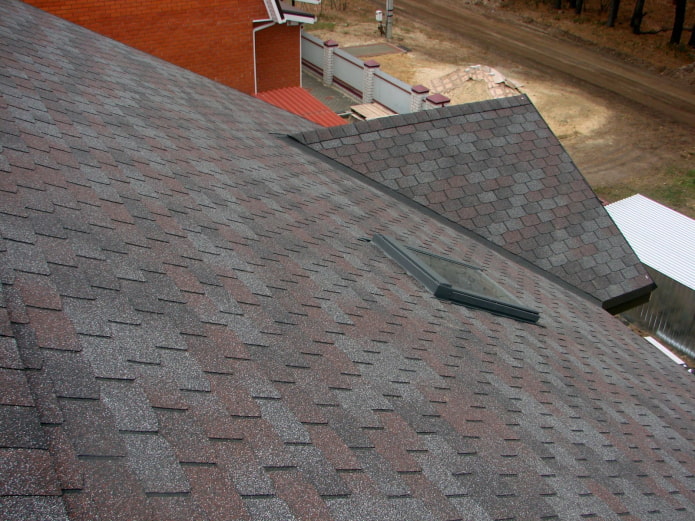
 10 practical tips for arranging a small kitchen in the country
10 practical tips for arranging a small kitchen in the country
 12 simple ideas for a small garden that will make it visually spacious
12 simple ideas for a small garden that will make it visually spacious
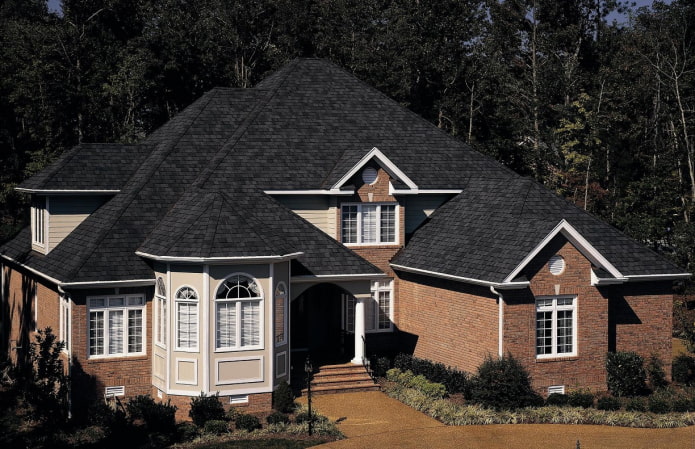
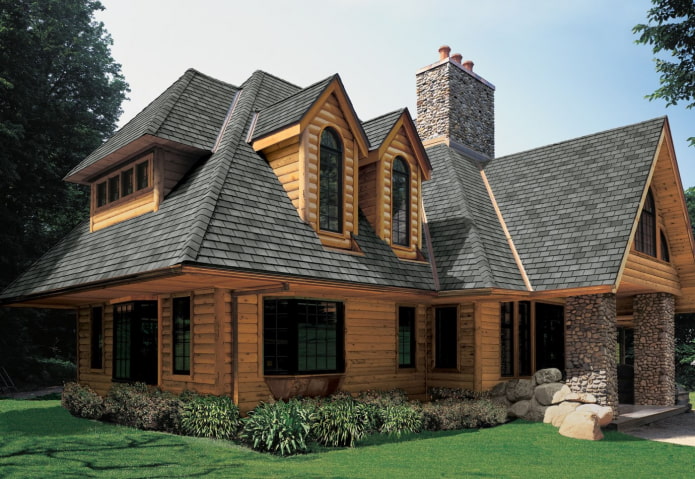

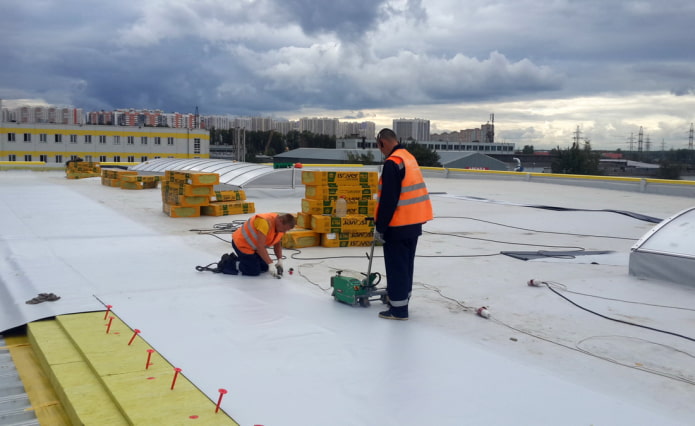

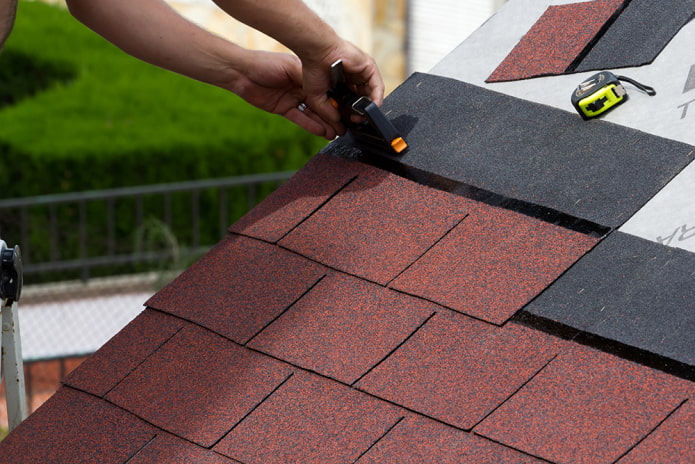
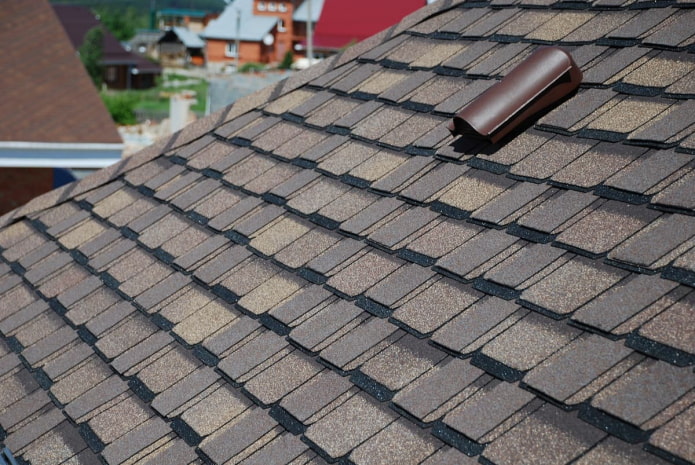
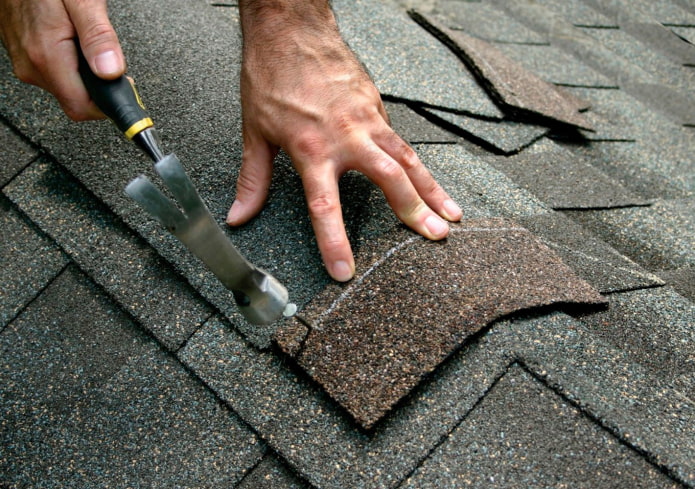
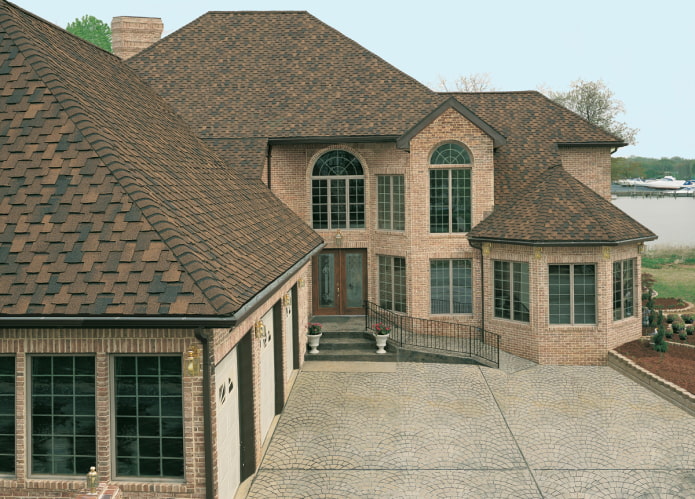



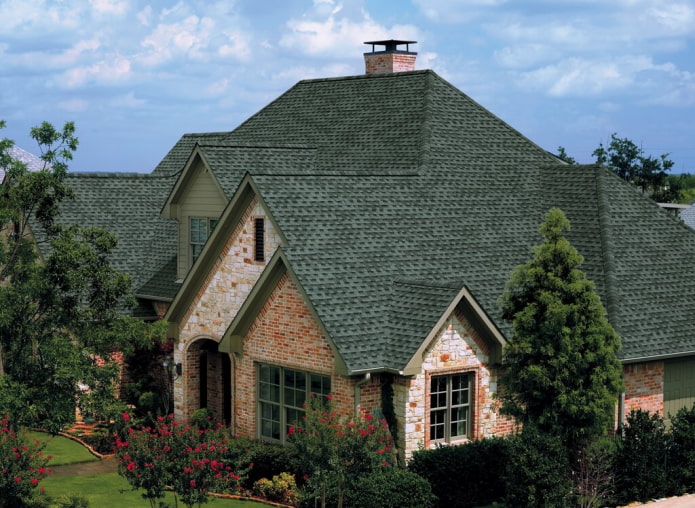
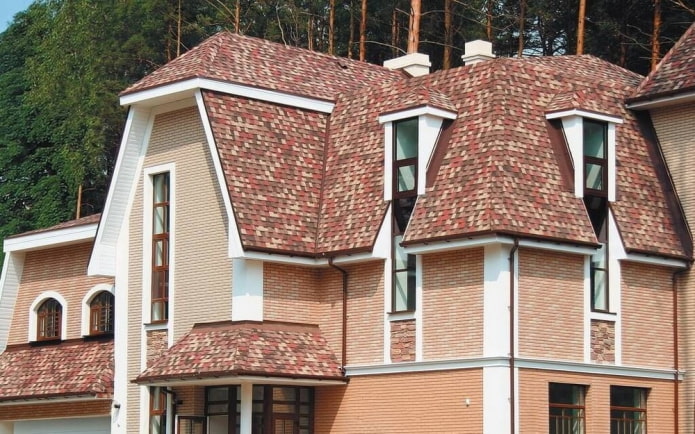
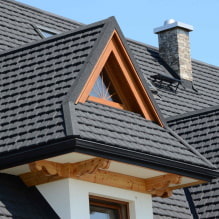
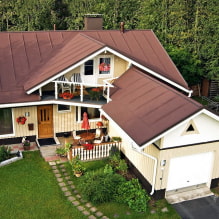
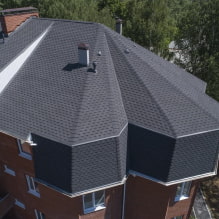
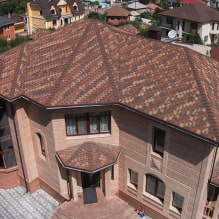
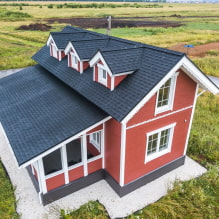
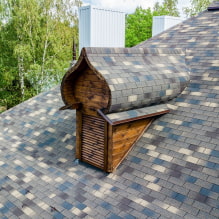
 What is better not to do it yourself during the repair?
What is better not to do it yourself during the repair? Bloated linoleum: how to fix it without disassembly
Bloated linoleum: how to fix it without disassembly The worst decisions in apartment renovation
The worst decisions in apartment renovation  Installation of ceiling tiles: choice of materials, preparation, order of work
Installation of ceiling tiles: choice of materials, preparation, order of work How to glue a ceiling plinth to a stretch ceiling?
How to glue a ceiling plinth to a stretch ceiling? Ceiling plinth for stretch ceiling: types, recommendations for selection
Ceiling plinth for stretch ceiling: types, recommendations for selection